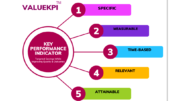In this edition, let’s explore what is needed to create a successful recall management program for any healthcare facility.
The Role of Executive Leadership in a Recall Management Program
Like any other program, we strive for compliance, positive outcomes, and sustainability, which means that the importance of efficient recall and alert management needs to become embedded in the culture of the organization. The only way this occurs is if the concept is embraced and supported by the executive leadership. This will ensure awareness of this process and promote recall and alert management as a patient safety initiative for the organization, bringing patient safety and risk management staff into the process. Executive oversight should promote accountability for outcomes, and they should serve as the review board when escalation is required.
Some organizations, especially larger ones, may also find it necessary to also designate another group of clinical leaders to serve on a Safety Alert Response Team. The purpose of this group is to mobilize the organization in the event of a critical alert that poses a threat to patient or staff safety, providing a network of individuals that can act immediately to identify and remove any products that pose such a threat. They can also develop a plan of what needs to be done should a replacement product be needed to ensure the continuity of care to patients.
Who Owns the Recall Management Process?
Once leadership has embraced the importance of recall and alert management, a structure for the process must be defined. This will largely depend on the size and resources of the organization. On the supplier side of the recall notification process, recalls are usually managed by a post-market team, not the sales team that value analysis professionals and supply chain staff normally interact with. This post-market team relies on the “ship to” data that they have for an organization when determining who receives the recall or alert notification. This means that one organization may receive multiple alerts, each one going to one of its “ship to” locations, which may or may not include the supply chain/materials management department. This can make managing these notifications a very daunting task.
The Role that Value Analysis or Supply Chain Can Play in Recall Management
A centralized structure would have one person or department as the designated “owner” of the process, with all notifications being funneled to them. This designee would be responsible for triaging the notification and coordinating all the activity involved with the recall or alert, including all communications with the suppliers. Effected departments may still be asked to assist with identifying products and completing any remediation required, but all actions would be reported back to this designee. This structure would also ensure that all areas within the organization that might be affected can be alerted to the recall, even if they did not receive the notification directly from the supplier. Some organizations have added this responsibility to someone in supply chain or value analysis. Others have created the position of “Recall Coordinator” to meet this need.
Do You Have to Work in Supply Chain or Value Analysis to Handle Recall Alerts?
An alternative structure to this would be a decentralized process, where each department or facility receiving an alert would provide their response directly back to the supplier. While this may appear more expedient on the surface, this approach has hidden dangers. By using a decentralized structure, the responsibility and accountability are also decentralized, making compliance more difficult to enforce and monitor, especially in larger organizations. It also allows for the chance for a notification to fall through the cracks if it is misdirected or forgotten about, especially if there is not a defined, consistent process that is followed by everyone in the organization. Delays in responding will result in additional alerts being sent out by the supplier, taking up more staff time as they determine what has already been processed and what is a new alert.
Why Documenting Your Process is Your Key to Success
Regardless of the structure that is chosen, the importance of documenting the process cannot be overstated. The data needs to be readily accessible and transparent to validate that a process is being followed, actions are being taken, and alerts are resolved. This documentation also provides evidence of compliance for any regulatory agency such as The Joint Commission, DNV, or the FDA. It should be able to be downloaded to reports for internal safety or risk management committee meetings. Ideally, this would involve a central repository for the information that can be shared among all team members involved in this process and would offer visibility to the leadership as they provide oversight to this process.
Once you have a solid foundation for your recall management program, you can start to build out more of the structure, through a defined policy and process that support your program. In the next installment, we will discuss what that policy should address, and the supporting workflow needed to sustain a successful recall management program.
Article by Tracey Chadwell
Tracey Chadwell has 30 years of clinical and supply chain experience driving clinical and operational performance improvement, demonstrating significant returns on investment through clinical utilization management of resources and operational cost savings. Her experience covers aspects of supply chain including data analytics, operational efficiencies, internal and external customer relations, GPOs and contracting, and consulting in these areas. Her experience in value analysis includes leading a program, developing or refining existing programs, and implementing millions of dollars in savings through various healthcare organizations. This included operational and clinical process improvement programs which contributed to cost savings in both labor and non-labor expenses.
This year, Tracey started her own consulting enterprise, TACH Consulting. Prior to joining that, she worked as a senior director of the clinical advisory specialists for Intalere, serving as an SME and trusted advisor to their members, as well as providing consulting services in supply chain and value analysis. In addition to her 10 plus years as a bedside nurse and manager, she has also worked as a consultant for value analysis and service-line analytics for two large GPOs.
Tracey has also been active with state healthcare organizations in all classes of trade, providing educational presentations and advisory services. She has appeared on several podcasts, such as Power Supply and The ASC Podcast as well as several industry blogs. She is a member of the Association for Healthcare Resource and Materials Management (AHRMM) and the Association of Value Analysis Professionals (AHVAP).
Articles you may like:
Why KPIs Can Help You Optimize Your Value Analysis Team’s Performance Almost Overnight
The Next Big Wave to Major Healthcare Supply Chain Savings Success





